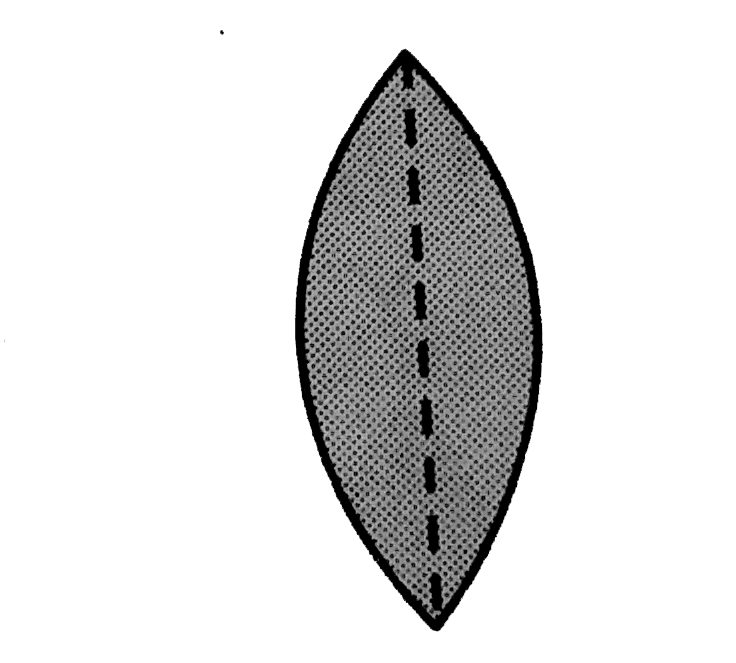A diverging lens of focal length F is cut into two idential parts, each forming a plano concave lens, Fig. What is the focal length of each part ?

For single diverging lens,
1F=(μ−1)(1R1−1R2)
Let R1=−R,R2=R
∴1F=(μ−1)(1−R−1R)=−2(μ−1)R
For each half (which is plano concave), as shwon in Fig.,
R1=−RandR−(2)=∞
∴1F1=1F2=(μ−1)(1R2−1∞)=−(μ−1)R
=12F
∴F1=F2=2F
Topper's Solved these Questions
- OPTICSBOOK - PRADEEPCHAPTER - OPTICSEXERCISE - Very short answer question
5 Videos
- OPTICSBOOK - PRADEEPCHAPTER - OPTICSEXERCISE - very short answer questions
1 Videos
- MAGNETIC EFFECT OF CURRENT AND MAGNETISMBOOK - PRADEEPCHAPTER - MAGNETIC EFFECT OF CURRENT AND MAGNETISMEXERCISE - Competition Focus (Multiple Choice Questions)
2 Videos
Similar Questions
An equiconvex lens of focal length 15cm is cut into two equal halves in thickness. What is the focal length of each half ?
View SolutionA convex lens of focal length 20 cm is placed in contact with a concave lens of focal length 10 cm. What is the focal length and power of the combination ?
View Solution
Knowledge Check
If a symmetrical convex lens of focal length 'f is cut into two parts along the principal axis as shown in the figure, the focal length of each part will be:
 Af2Bf4CfD∞
Af2Bf4CfD∞A convex lens has a focal length f. It is cut into two parts along the dotted line as shown in figure. The focal length of each part will be
 Af2BfC32fD2f
Af2BfC32fD2fA convex lens has a focal length f. It is cut into two parts along the dotted line as shown in figure. The focal length of each part will be
 Af2BfC32fD2f
Af2BfC32fD2f
A20cm convex lens is placed in contact with a diverting lens of unknown focal length ,The lens combination acts as a converging lens and has a length of30cm.What is the focal length of the diverging lens.
View SolutionA convex lens of focal length f1 is kept in contact with a concave lens of focal length f2. Find the focal length of the combination.
View SolutionIf a lens of focal length f is divided into two equal parts and both pieces are put in contact as shown in fig. The resultant focal length of combination is

View SolutionIf a lens of focal length f is divided into two equal parts and both pieces are put in c o n - tact as shown in fig. The resultant focal length of combination are

View SolutionA convex lens of focal length f cut into parts first horizontally and then vertically. Find the focal length of part A of the lens, as shown:

View Solution
